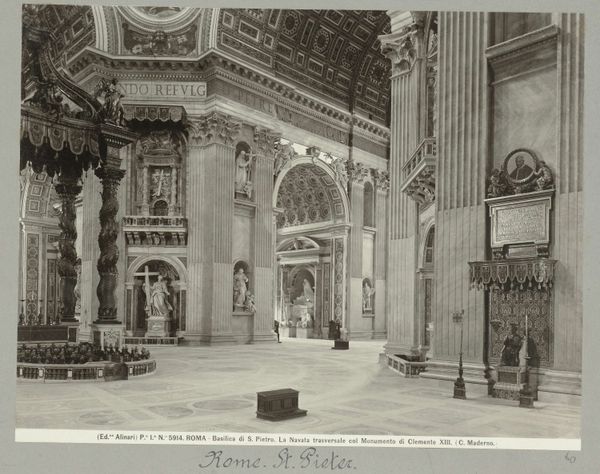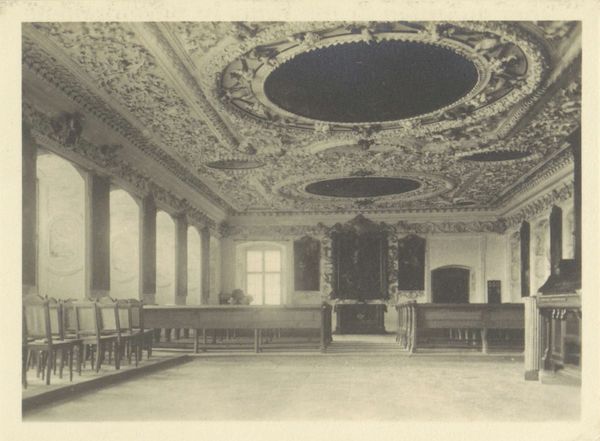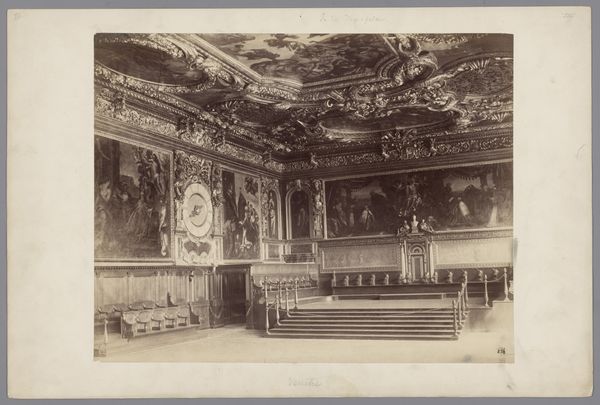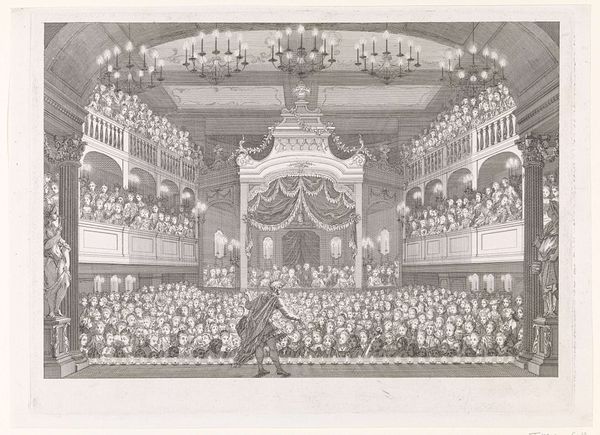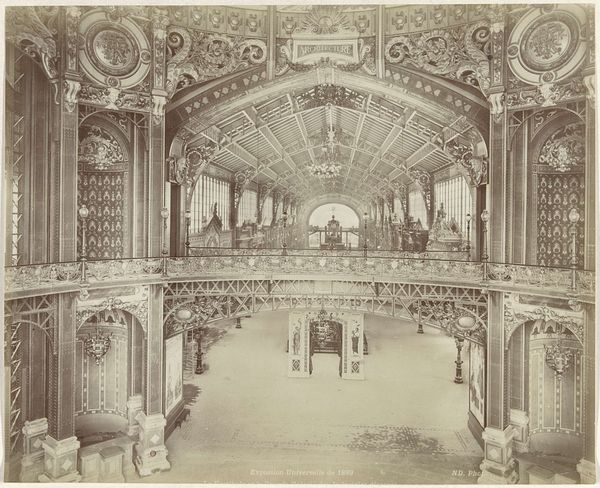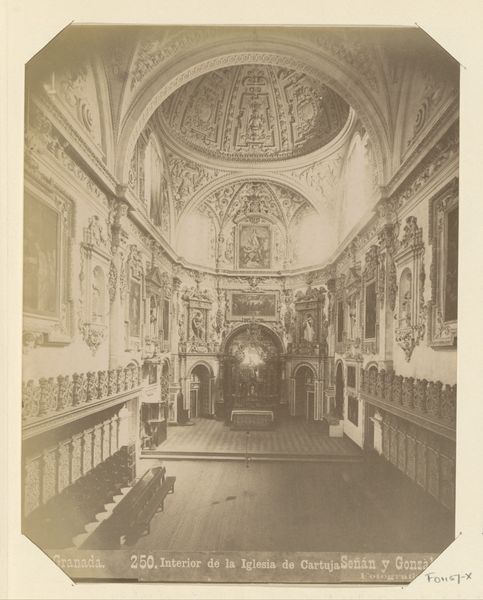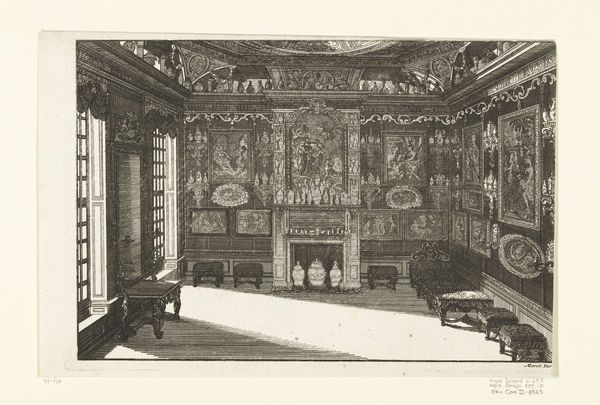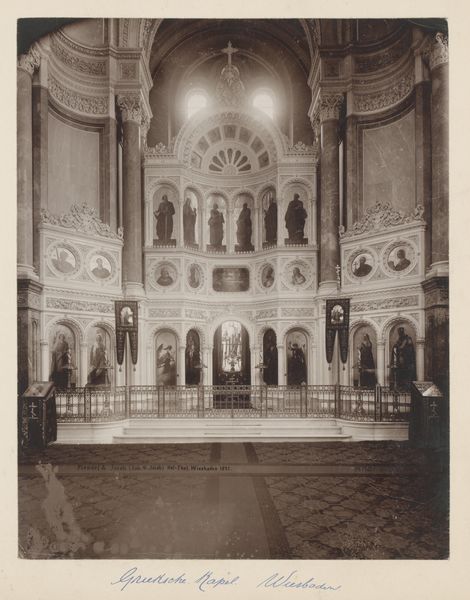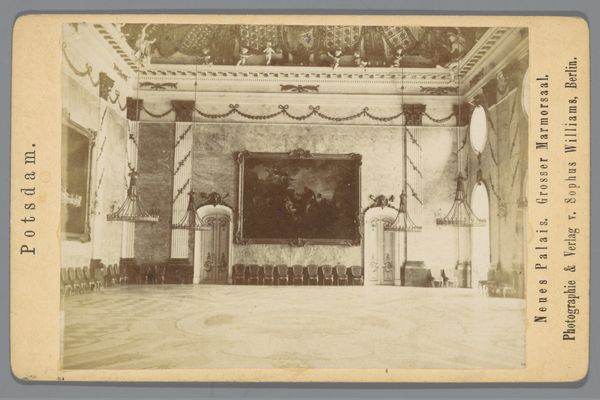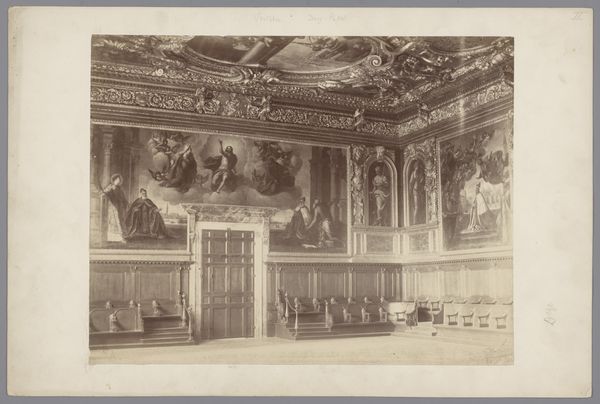
photography
#
photography
#
old-timey
#
19th century
#
realism
Dimensions: height 226 mm, width 333 mm
Copyright: Rijks Museum: Open Domain
Curator: Let’s turn our attention to “Interieur van het Spaanse congres,” or "Interior of the Spanish Congress" by Juan Laurent, a photograph taken sometime between 1857 and 1880. Editor: My first impression is solemnity; there's a very quiet, staged atmosphere about this. All the chairs lined up perfectly, the high ceilings—it evokes a hushed reverence, almost like a church. Curator: Indeed. Laurent's work often captured the grandeur of public spaces and architecture. This photograph is more than just documentation, it reflects the power structures inherent in governance. The careful composition frames the space as both functional and symbolic, emphasizing the institutional nature of political discourse. We see here the physical embodiment of authority. Editor: I agree, and that symbolism can be viewed through the lens of gender and power. Notice the male statue looming above the seats of power, a visual reinforcement of male dominance within the political sphere during that period. And how does the architecture itself dictate social roles, almost shaping its occupants in particular positions or functions. The layout of Congress, in this image, underscores the limitations faced by marginalized voices, especially women. Curator: I see your point about gendered space. Considering the role of museums and archives then, this photograph would have contributed to shaping public perceptions of government. Laurent, operating within certain constraints of photographic practice, subtly reinforced existing socio-political orders. Editor: I find that absolutely vital. These images solidify a very distinct narrative of nationhood that is closely connected to control. Even a simple photograph holds this much social currency. What appears to be documentation turns out to be advocacy of sorts, a stance which further perpetuates social injustices and control within political avenues. Curator: Precisely. And so, through analyzing "Interieur van het Spaanse congres," we’ve explored not just what is depicted but also the unacknowledged biases encoded in its creation and distribution. Editor: It leaves one wondering: How does photographic history affect our collective understanding and the evolution of societal equality? A thought-provoking question to consider.
Comments
No comments
Be the first to comment and join the conversation on the ultimate creative platform.
